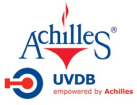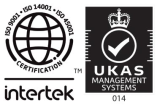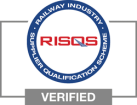-
Lifting Equipment
 Browse Lifting Equipment Shop
Browse Lifting Equipment Shop
- Chain Hoists
-
Wire Rope Hoists
- Hand Operated Wire Rope Winches and Hoists
- Cable Pullers / Hoists, Wire Rope Manual Operation
- Electric Winches and Hoists, AC (Mains Powered)
- Scaffold Hoists & Accessories
- Overhead Wire Rope Crane Hoists
- Hydraulic Wire Rope Winches & Hoists
- Pneumatic Wire Rope Air Winches / Hoists (Lifting and Pulling)
- Vehicle Mounted Winches
- Tractel Wire Rope & Accessories
-
General Lifting Equipment
- Fibre Slings
- Chain Slings Assemblies & Components
- Lifting and Lashing Chain
- Wire Rope Slings & Assemblies
- Shackles
- Eyebolts and Eyenuts
- Lifting & Pulling Clamps
- Lifting Beams & Spreader Beams
- Precast Concrete Lifting
- Lifting Magnets, Permanent, Battery Electric and Manual
- Runway Beam Monorail Crane Trolleys, Push, Geared & Electric
- Equipment Identification Tags
-
Rigging Equipment
- Crosby Lifting & Rigging
- Master Ring & Load Suspension Eyes
- Lifting & Rigging Hooks
- Turnbuckles & Rigging Screws
- Wire Rope Accessories and Fittings
- Snatch Blocks, Sheave Blocks and Crane Pulley Blocks
- Load Restraint Equipment
- General Rigging Accessories
- Lifting & Rigging Swivels - Eye, Hook & Shackle
- Pulley Sheaves
-
Cranes & Gantry Systems
- Portable Davit Arms and Jib Cranes
- Swing Jib Cranes - Installed Floor & Wall Cranes
- Portable/Mobile Free-standing Swing Jib Cranes
- Aluminium Gantries
- Steel Gantries
- Fixed Steel Gantry Systems
- Shearlegs, Tripods & Quadpods
- Overhead Crane Systems
- Portable Shop-Floor/Workshop/Garage Cranes
- Counterbalance Floor, Workshop Cranes
- Scaffolding Runway Beam Systems
-
Material Handling & Jacking Equipment
- Machinery & Load Moving Skates
- Hydraulic Cylinders & Pumps
- Lifting Jacks
- Manhole Cover Lifters
- Hydraulic Pull Cylinders
- Hand Operated Pallet Trucks, Pump Trucks
- Stacker Trucks, Materials Lifts, Manual and Electric
- Genie and Counterbalance Materials Lifters
- Scissor Lift Tables
- Drum Handling Equipment
- Crane Forks
- Load Weighing Equipment - Load Cells
- Tool Spring Balancers / Load Balancers
- Platform Trucks & Trolleys
-
Fork Lift Truck Attachments
- Fork Mounted Man Riding Baskets
- Environment & Waste Handling Attachments
- Fork Lift Truck Mounted Drum Handling Attachments
- Fork Mounted Jib and Hook Attachments
- Fork Truck Booms & Tines
- Stainless Steel Forklift Attachments
- Forklift Truck Fork Extensions
- Multi Fork Attachments
- Fork Truck Scoop Attachments
- Big Bag Fork Truck Attachment
- Closed Base Coil Support Attachments
- Forklift Fork Protection Sleeves
- Snow Plough Fork Lift Truck Attachments
- Other Forklift Truck & Telehandler Attachments
- Specialist Lifting Equipment
- Access and Safety Related
- Workshop and Shop Floor
- Screwjacks & Actuators
-
Height Safety
 Browse Height Safety Store
Browse Height Safety Store
-
Fall Arrest and Height Safety Harnesses
- General Use Harnesses EN361
- Work Positioning Harnesses EN361 & EN358
- Rope Access Harnesses
- Rescue Harnesses EN1497 & EN361
- Ladies & Childrens Harnesses
- Hi Vis Jacket/Vest Harnesses
- Welders Harnesses
- ATEX (Anti-Static) Harnesses
- Linesman Harnesses
- Oil Derrick Harnesses
- Sport Climbing Harnesses
- Tree Surgeon Positioning Harnesses
- Sit and Chest Harnesses. EN361 EN356 & EN831
- Work Positioning & Restraint Belts EN358
- Fall Arrest, Restraint and Positioning Lanyards
- Height Safety and Fall Arrest Kits
- Inertia Reels and Retrieval Blocks
- Man-riding Hoists & Rescue Winches
-
Fall Arrest & Man-riding Systems
- Fall Arrest Davit Arms & Posts for Working at Height
- Sala Advanced Davit Arm Systems and Components
- Xtirpa Confined Space Davit Arm Systems and Components
- Abtech Man-riding, Fall Arrest and Rescue Davits and Components
- Man-riding & Rescue Tripods & Quadpods
- Manriding Systems, Baskets and Chairs
- Mobile Fall Arrest Gantries, Systems & Steps
- Rope Guided Fall Arresters (Steel & Synthetic Rope)
- Temporary Horizontal Fall Arrest Lifelines
- Vertical Fall Arrest Systems Permanently Installed
- Horizontal Fall Arrest Systems Permanently Installed
- Manriding Baskets Fork Truck and Overhead Crane
- Tank Side Entry and Vehicle Fall Arrest Systems
- Suspension Seats / Bosuns Chair Working at Height
- Collective Fall Arrest Systems
- Man-Riding Sheave Blocks
- Anchorage Devices
- Karabiners & Connectors
- Rescue, Evacuation & Rope Access
-
General Height Safety Gear
- Height Safety Accessories
- Industrial & Climbing Height Safety Helmets
- Synthetic Height Safety Rope & Anchorage Lines
- Height safety Pulley Wheels For Synthetic & Steel Wire Rope
- Black Height Safety Equipment & PPE
- Hot Work Equipment. Cutting, Grinding & Welding
- Cases, Bags, Backpacks, Holdalls. Height Safety Gear
- Telescopic Extension Pole for Height Safety Applications
- Wind Energy Height Safety Equipment
-
Stainless Steel Fall Arrest Equipment
-
Fall Arrest and Height Safety Harnesses
- Home
- About Us
-
Contact
Get In Touch
- Home/
- Lifting Equipment/
- Rigging Gear; Riggers Lifting Equipment/
- Lifting & Rigging Hooks - All Types/
- Automatic Lifting Hooks/
- LiftingSafety Automatic Lift and Release Hooks/
- Anti Working at Height Remote Release Lifting Clamp / Hook
Anti Working at Height Remote Release Lifting Clamp / Hook
Remote release hook for the lifting, positioning and releasing a load without the need for a person to climb on to a load to release the hook
CRTC-3241


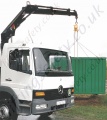






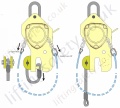
Unfortunately these Automatic Release Lifting Hooks are no longer available. Please see our range of automatic release hooks for a possible alternative.
Compliance With The Working at Height Regulations 2005 - The Work at Height Regulations 2005 state: "There is a simple hierarchy for managing and selecting equipment for work at height. Duty holders must avoid work at height where they can"
Traditionally a crane driver, his rigger or an assistant will need to climb on a vehicle and / or the load to release the slings; an action that may need to be repeated many times with each delivery or during a working day. Our safety hook makes it possible to release the slings from the load without the need to work at height which in turn means that the user does not need a fall arrest or rescue plan. It may be argued that with some cargo's the safety hook may not totally elevate working at height with vehicle cranes though that we will all agree that a 50% reduction in working at height means there is only a 50% change of a fall occurring! The first rule for working at height is to avoid doing when ever possible!
Vehicle crane applications
We at SELS are now developing a new version of our remote release hook system for retro fitting to vehicle cranes commonly known as Hi-ab cranes. The hooks will be available in capacities to suit our customers requirements and with radio remote control removing the need for the manual pull chains which may be obstructed by the load. We can supply the hooks with a top suspension eye or fully integrated in to the Hi-ab's own hook, becoming a permanent fitting of the crane.
 |
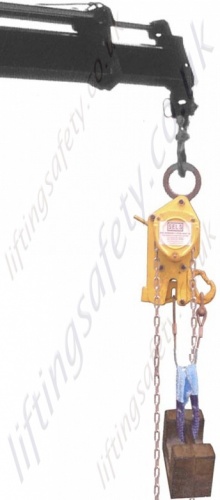 |
| Manual Release Safety Hook fitted to the Hook on an IHAB | Manual Release Hook fitted to a HIAB |
Safety First
The hook is designed with a double safety mechanism that locks the load hook in position preventing the load from accidentally being released - even if the user accidentally pulls on the release rope or if the release rope gets snagged! All the weight of the load must be taken off the hook before the release mechanism will activate. First the pull chain on the left is pulled to release the first safety pin then the right chain is pulled rotating the internal cam and opening the hook.
What makes this hook unique is that it can be used for many applications allowing the hook to be released from the load without the need for the rigger / crane operator to climb on to the load / lorry trailer and therefore not exposing them to a potential fall. The clamp uses a wire rope looped around the truss / load lifted in a suitable position to lift and hold the load in-situ. When the lifting arrangement requires disconnection from the truss this can safely be accomplished from ground level or from a point of safety by the use of twin ropes/chains. (please see ‘How clamps work’ section for a detail explanation).
This clamp / hook was originally designed for lifting and positioning roof trusses on the back of a vehicle; it was designed because the rigger could not reach the crane hook to manually release the load. It is generally accepted that persons should not work at height unless absolutely necessary; with this unique hook users have the ability to release the hook from the load (from floor level) with-out the need to work at height - thus no requirement for a fall arrest or rescue plan and persons can safety work alone!
How The Clamps Work
This type of clamp uses two ropes / chains to control the position of a cam and latch mechanism. One end of a wire rope is firmly fixed to a hook on the side of the clamp. The free end is looped under the top member of the truss/load in a suitable position and then fitted into the mouth of the clamp. The moving hook of the clamp is then entered into the eye of the rope and the clamp locked.
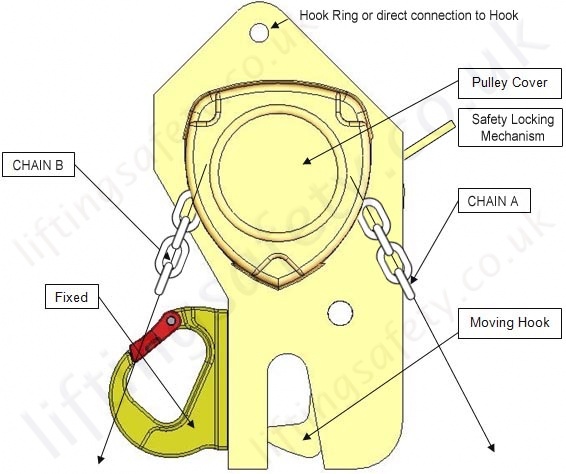
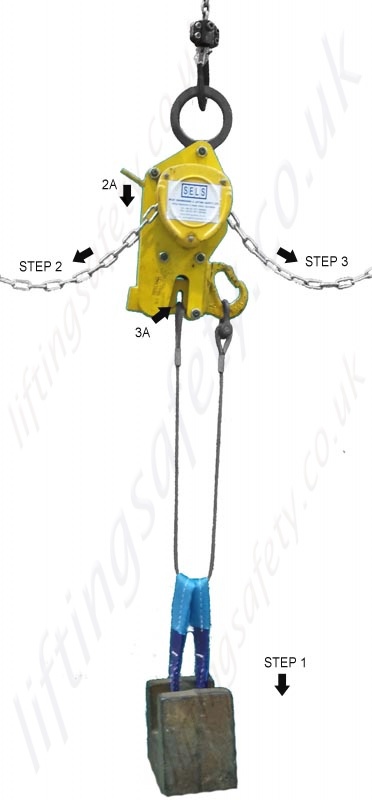
Fig 1. General Layout Front View.
Fig 2. shows the clamp in the locked position lifting a load. The weight of the load forces the hook follower into a grove on the cam effectively locking the cam in position. When the weight of the load is removed a small spring unlatches the follower from the grove, rope A is now free to move. See fig 3.
Pulling rope A rotates the cam clockwise 90° releasing the locking latch / safety flag. See fig 4., the safety flag protrudes from the clamp indicating that the clamp is in an unlocked position and is about to release the rope.
Pulling rope B now rotates the cam 180° bringing the cam cutout under the hook follower allowing the moving hook to open releasing the end of the lifting rope. The clamp then remains in this position ready for the next lift.

Fig 2. Locked lifting load

Fig 3. Locked without weight
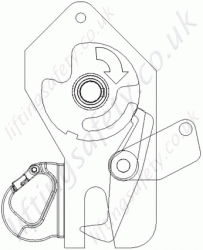
Fig 4. Clamp primed for release
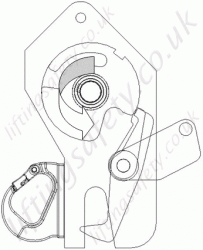
Fig 5. Clamp about to release
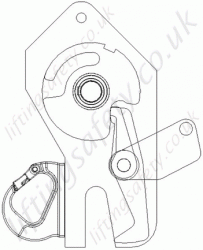
Fig 6. Release of wire rope
More Robust Remote Release Clamp

Unfortunately these Automatic Release Lifting Hooks are no longer available. Please see our range of automatic release hooks for a possible alternative.
Compliance With The Working at Height Regulations 2005 - The Work at Height Regulations 2005 state: "There is a simple hierarchy for managing and selecting equipment for work at height. Duty holders must avoid work at height where they can"
Traditionally a crane driver, his rigger or an assistant will need to climb on a vehicle and / or the load to release the slings; an action that may need to be repeated many times with each delivery or during a working day. Our safety hook makes it possible to release the slings from the load without the need to work at height which in turn means that the user does not need a fall arrest or rescue plan. It may be argued that with some cargo's the safety hook may not totally elevate working at height with vehicle cranes though that we will all agree that a 50% reduction in working at height means there is only a 50% change of a fall occurring! The first rule for working at height is to avoid doing when ever possible!
Vehicle crane applications
We at SELS are now developing a new version of our remote release hook system for retro fitting to vehicle cranes commonly known as Hi-ab cranes. The hooks will be available in capacities to suit our customers requirements and with radio remote control removing the need for the manual pull chains which may be obstructed by the load. We can supply the hooks with a top suspension eye or fully integrated in to the Hi-ab's own hook, becoming a permanent fitting of the crane.
 |
 |
| Manual Release Safety Hook fitted to the Hook on an IHAB | Manual Release Hook fitted to a HIAB |
Safety First
The hook is designed with a double safety mechanism that locks the load hook in position preventing the load from accidentally being released - even if the user accidentally pulls on the release rope or if the release rope gets snagged! All the weight of the load must be taken off the hook before the release mechanism will activate. First the pull chain on the left is pulled to release the first safety pin then the right chain is pulled rotating the internal cam and opening the hook.
What makes this hook unique is that it can be used for many applications allowing the hook to be released from the load without the need for the rigger / crane operator to climb on to the load / lorry trailer and therefore not exposing them to a potential fall. The clamp uses a wire rope looped around the truss / load lifted in a suitable position to lift and hold the load in-situ. When the lifting arrangement requires disconnection from the truss this can safely be accomplished from ground level or from a point of safety by the use of twin ropes/chains. (please see ‘How clamps work’ section for a detail explanation).
This clamp / hook was originally designed for lifting and positioning roof trusses on the back of a vehicle; it was designed because the rigger could not reach the crane hook to manually release the load. It is generally accepted that persons should not work at height unless absolutely necessary; with this unique hook users have the ability to release the hook from the load (from floor level) with-out the need to work at height - thus no requirement for a fall arrest or rescue plan and persons can safety work alone!
How The Clamps Work
This type of clamp uses two ropes / chains to control the position of a cam and latch mechanism. One end of a wire rope is firmly fixed to a hook on the side of the clamp. The free end is looped under the top member of the truss/load in a suitable position and then fitted into the mouth of the clamp. The moving hook of the clamp is then entered into the eye of the rope and the clamp locked.


Fig 1. General Layout Front View.
Fig 2. shows the clamp in the locked position lifting a load. The weight of the load forces the hook follower into a grove on the cam effectively locking the cam in position. When the weight of the load is removed a small spring unlatches the follower from the grove, rope A is now free to move. See fig 3.
Pulling rope A rotates the cam clockwise 90° releasing the locking latch / safety flag. See fig 4., the safety flag protrudes from the clamp indicating that the clamp is in an unlocked position and is about to release the rope.
Pulling rope B now rotates the cam 180° bringing the cam cutout under the hook follower allowing the moving hook to open releasing the end of the lifting rope. The clamp then remains in this position ready for the next lift.

Fig 2. Locked lifting load

Fig 3. Locked without weight

Fig 4. Clamp primed for release

Fig 5. Clamp about to release

Fig 6. Release of wire rope
More Robust Remote Release Clamp

Pricing
Unfortunately this product has been discontinued and/or is no longer available. Please contact us for details on possible alternative products.
Contact Us About This Product
If you wish to receive a quote for this product, please use the 'Pricing' tab above, this form is for general enquiries regarding this product only.
You can also Request a Quote using the Buy/Quote tab above!
You can easily add more than one item to the Quote Request. This is highly recommend as we will be able to suit your needs much more efficiently.
Share this page!

Save this QR code
for use on Smart Phones
